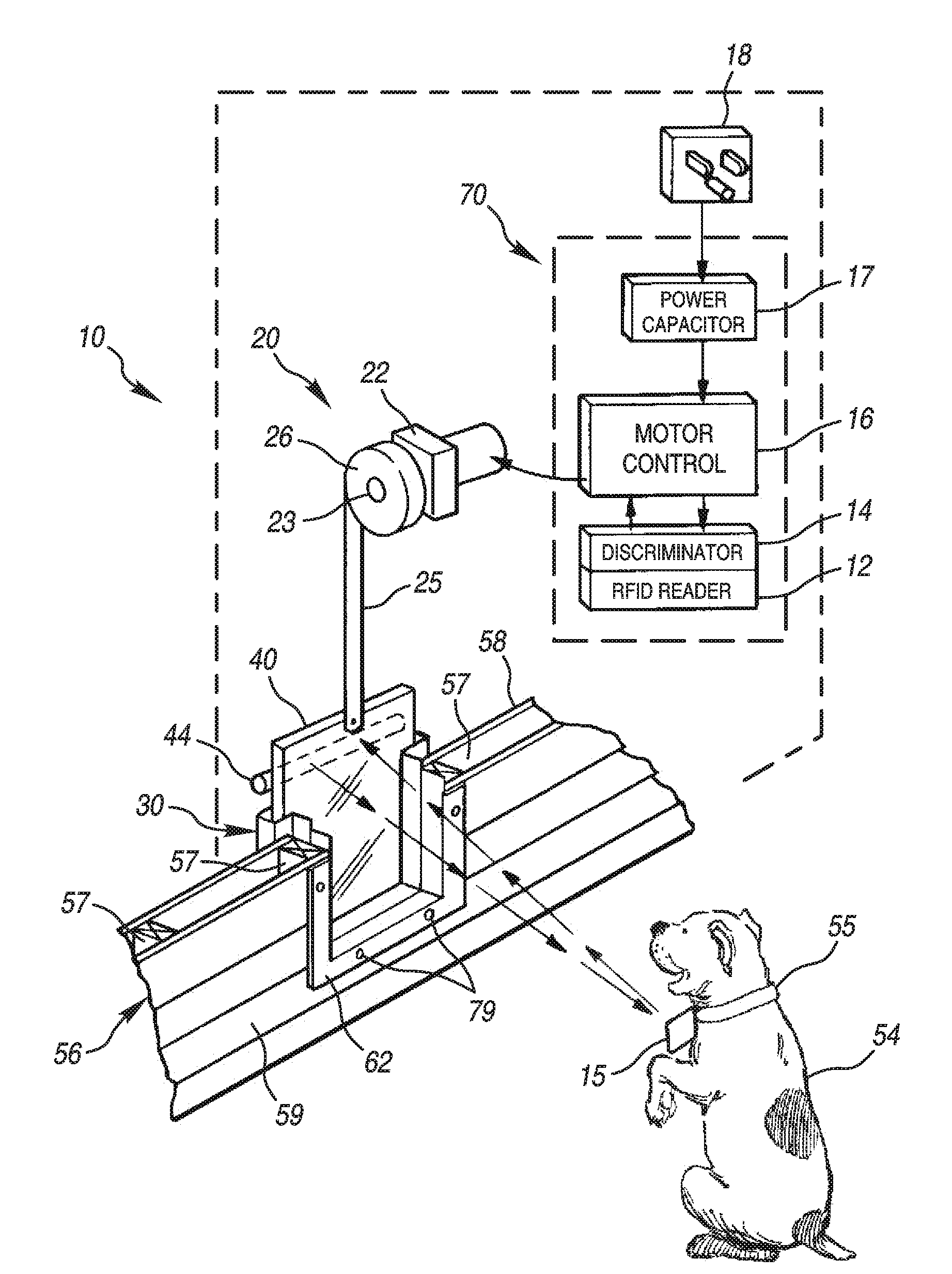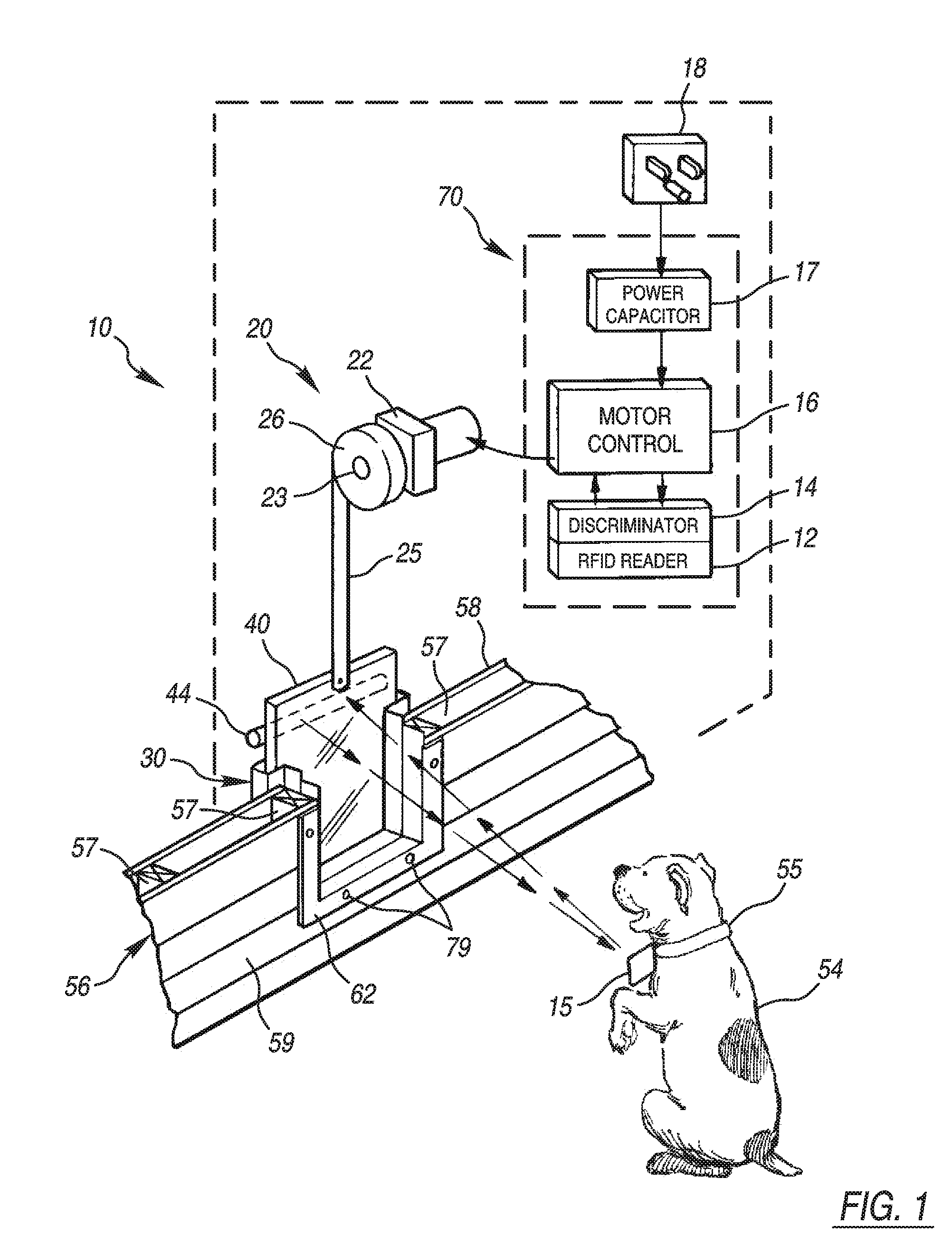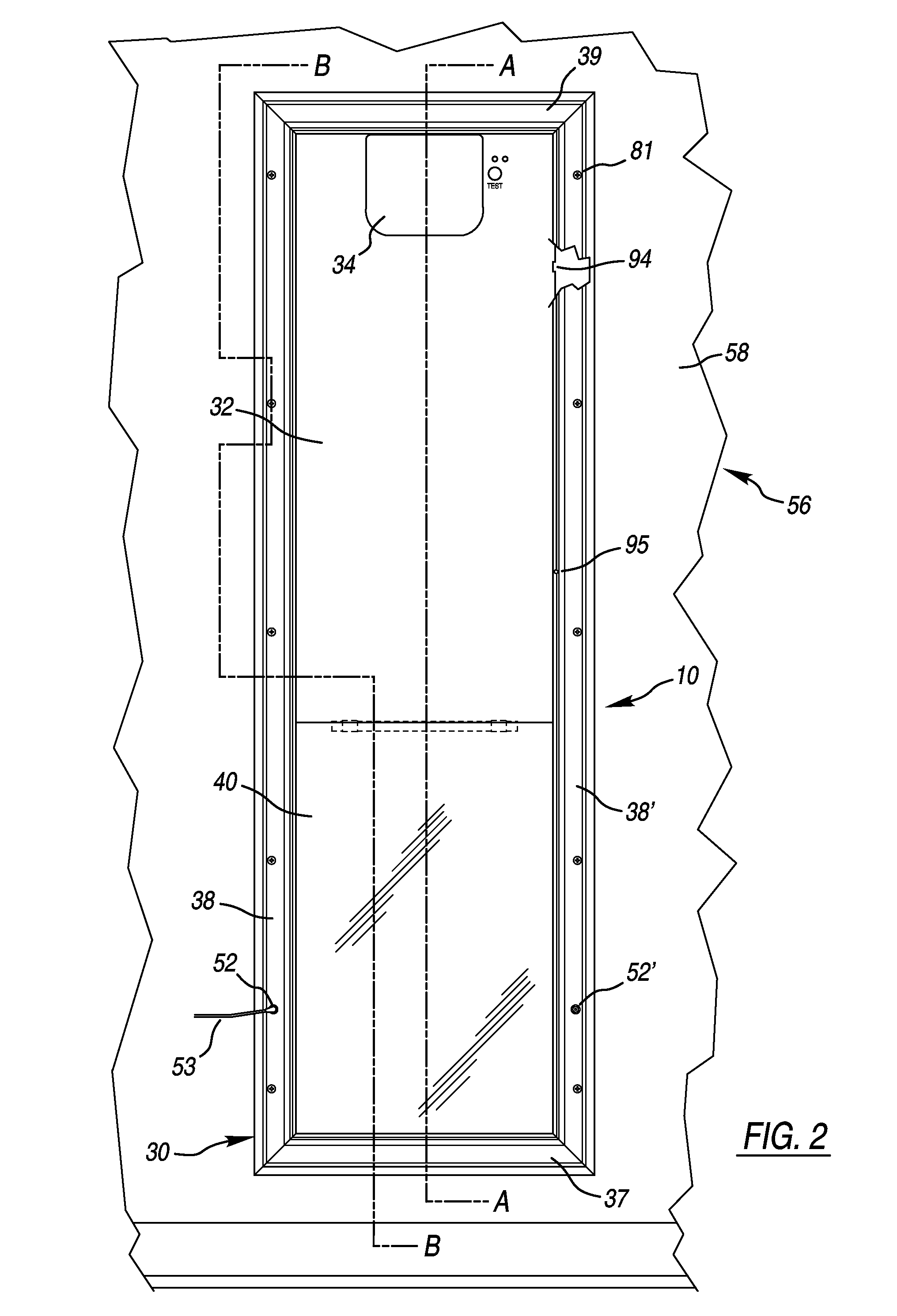[0011]Still another embodiment of the present invention includes a programmable pet door
system that provides a vertically rising door that may be sealed against the elements by
low friction, fibrous seals on one or more of its edges which may also serve to guide the door's panel through its motion. The panel may be raised by a gear motor which may have a constant tension spring mounted on its output shaft. An extended end of the constant tension spring may engage a lever which may be mounted on the upper end of the panel. The upper end of the panel may also contain a spring loaded latch that may engage an opening in a frame of the device to securely lock the panel in the generally closed position. The latch may be withdrawn from engagement by a link between it and the lever in a manner such that the latch may be fully withdrawn before the additional pull on the constant tension spring causes the panel to move upward. The frame may be configured to maintain the movable panel, its seal strips, the gear motor, the control panel, the latching means and the constant tension spring
all inside the plane of the inner wall of the
enclosure that the pet door serves. This configuration may be further optimized by confining all the large, horizontally thick members of the mechanism such as the gear motor and its mounted constant tension spring centrally located at the top of the structure which may enable a relatively compact cover to contain and conceal them and removably attach to a thin cover panel that may conceal the balance of controls and mechanism above the opening for the pet. This embodiment can result in an attractive, relatively thin housing on the inside of the wall or door and a small opening through the wall or door that is slightly larger than the net opening of the pet door.
[0012]In one embodiment, the seals strips may engage the entire perimeter of the outward face, the sides and bottom of the inward face and both vertical edges and the bottom edge of the door panel. In one embodiment, the cover panel may be made of a relatively thin, but of a stiff and strong material with edges confined in a channel spaced inwardly from the door panel. The cover panel may be fastened in place in the normal, uppermost location with its lower edge above the uppermost opening for the pet to pass through. The cover panel may be unfastened and lowered for access to the mechanism and controls or may be fastened in the fully down location to provide additional security to supplement the latched door panel during periods of prolonged disuse such as during a vacation or for hurricane protection.
[0013]While this pet door fully contemplates the use of an AC gear motor, in one embodiment, a
low voltage DC gear motor may be used which may be supplied by a remote, plug-in power supply having an output current that may be purposely below the full power requirement of the gear motor. The
control circuit may provide one or more capacitors which are fully charged by the power supply between opening cycles. Upon the gear motor being energized by the control, it may be fully powered by both the
discharge of the
capacitor and the power supply and aided by the constant tension spring, it vigorously unlatches and begins pulling the door panel upward. The
capacitor may be sized so that it may be exhausted before the panel reaches the fully open position, such that the output of the undersized power supply alone drives the panel its final distance. This reduced
power level may be little more than enough to maintain the panel in the full open position. When the dwell period, which may be adjustable, expires, the power is
cut to the gear motor and the weight of the panel overcomes the pull of the constant tension spring and the
frictional resistance of the sealing strips. This causes the panel to slowly descend against the bias of the spring, back winding the gear motor and eventually bottoming out with a
net force of a few ounces which is less than what might
cause injury or for that matter even pain to a lingering pet. This configuration therefore advantageously eliminates the need for sensors or other protective devices to prevent pinching when the load bottoms out. The use of the
capacitor that is fully charged shortly after each
operating cycle may provide an important additional benefit. RFID
electronics require a D.C. power supply with a relatively low
ripple. Another embodiment may eliminate the use of power capacitors and utilize a power supply of adequate capacity to fully power the motor in the upward direction and in a manner that is disclosed below, powering it in a down direction with a reduced
voltage. So configured, the
system may include a programmable micro-processor and one or more switches such as reed switches for detecting when the panel reaches a full open position, for example.
[0014]The use of a DC gear motor allows the use of a
dynamic braking resistor across its leads to supplement the drag of the sealing strips and the
gear train when the power is
cut to the gear motor and the panel is descending. The amount of resistance may be adjustable which would create the opportunity to compensate for the change in
frictional resistance of the sealing strips due to long term wear or the effects of severe changes in weather.
[0018]In at least one embodiment, the ability for the non-technical home owner to troubleshoot and repair the device may be greatly enhanced. A manual press to operate switch may be provided to determine if a failure to operate is due to the pet detection control or the power and gear motor portion. The cover protecting and concealing the large protruding components may be a snap fit for quick and easy removal which could
expose at least a single
fastener which if removed, would allow the cover panel to be lowered exposing all of the controls and mechanism. The sliding door and the sliding cover panel, which can be located inside the plane of the surface of the inside wall or door, may be removed and replaced by merely removing the
top cap of the device's frame.
 Login to View More
Login to View More  Login to View More
Login to View More 


